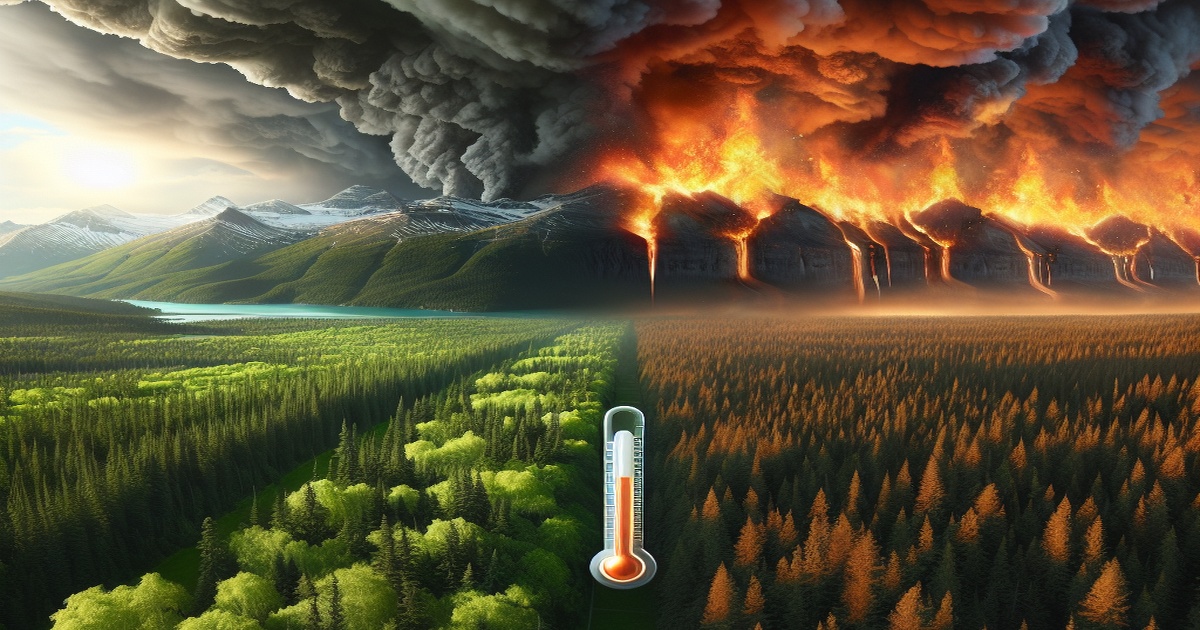A study released on Thursday suggests that Canadian forests are becoming increasingly susceptible to severe wildfires, pointing to an urgent necessity for proactive strategies to combat the heightened risks associated with climate change. This research, conducted by Canadian scientists and published in the journal Science, analyzed fire severity trends in Canada from 1981 to 2020.
According to co-author Xianli Wang, a research scientist with the Canadian Forest Service, there was an average increase of two days suitable for high-severity fires during the years 2000 to 2020 compared to the previous two decades, with some regions experiencing nearly five additional days. Although this may appear to be a small change, the devastating wildfire that occurred last summer in Jasper, Alberta, which expanded rapidly to 60 square kilometers, illustrates the gravity of the situation.
The geographical analysis of wildfire severity indicates that the record-breaking fire season in Canada in 2023 is likely a precursor of what we can expect in the future, rather than an isolated incident. As Wang describes, the phenomenon of high-severity fires will become increasingly common across various regions of Canada.
The study identifies dry fuel sources like twigs and leaves as the primary environmental contributors to fire severity, while extreme weather conditions, predominantly observed in northern areas, intensify this effect. It emphasizes how crucial drought conditions can be in escalating fire intensity.
Moreover, as climate change prolongs the fire season, the study reveals an increase in high-severity burn days during both spring and autumn over the last few decades, coinciding with some of the most severe summer months. Wang pointed out that the assumption that summer is the only season for severe fires is misguided, signaling a shift in fire behavior that includes dangerous conditions in spring.
Significant increases in burn severity days occurred primarily in northern Quebec and regions including Northwest Territories, northwest Alberta, and northeast British Columbia, which are rich in coniferous trees. In contrast, areas with lower burn severity days mainly consist of southern broadleaf and mixed-wood forests. Severity, in this context, refers to the extent of damage inflicted by fires on forest vegetation and soil.
Wang noted that while fire plays a natural role in ecosystems, extreme fires can reach such intense temperatures that they eradicate soil-stored seeds, hampering forest regeneration. The insights from this study could assist decision-makers in determining optimal times and locations for conducting controlled burns, aimed at promoting natural growth while mitigating fire hazards for nearby communities.







8 Comments
Karamba
Fire management strategies must evolve with our changing climate. This research is a step in the right direction!
Matzomaster
Proactive strategies are essential! Controlled burns could make a real difference and help mitigate future risks.
Rotfront
It’s about time we take these warnings seriously. Wildfires don’t just affect forests; they impact all of us.
Matzomaster
Very informative. It's important that we educate ourselves about these changes in order to protect our forests and wildlife.
Karamba
This study is a reminder of how interconnected our climate, wildfires, and ecosystems are. Time for action!
Leonardo
Kudos to the researchers for shedding light on this critical issue. Forests are vital for our planet's health!
Donatello
As a concerned citizen, I find this study concerning but necessary. Let’s support our scientists in protecting our forests!
Michelangelo
Wildfires are becoming more intense due to climate change, and we need to adapt our strategies accordingly.